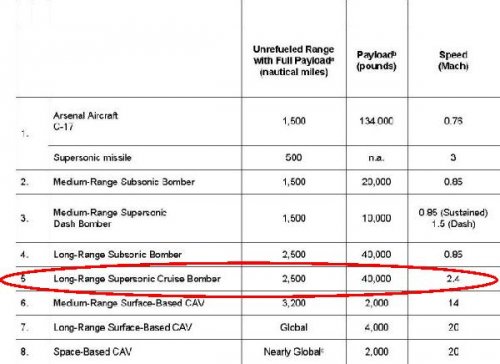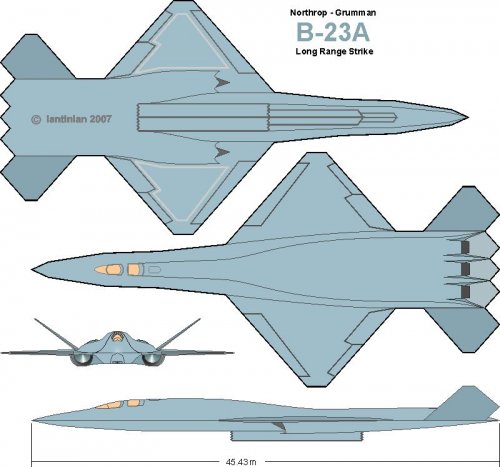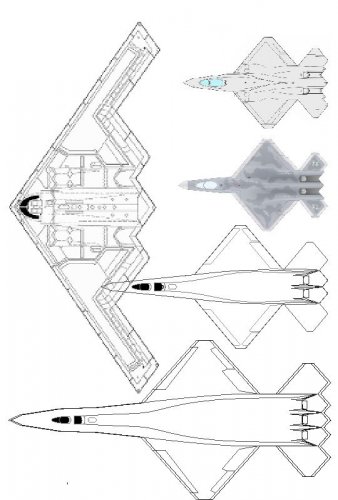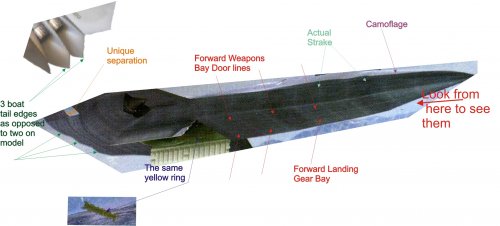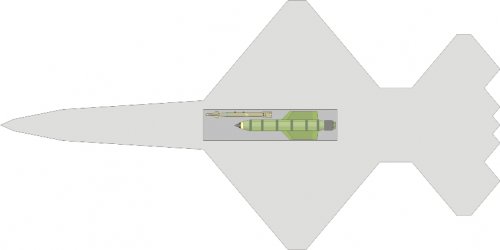Here we go...
Just a few words.
As you can see, I have based my 4 view drawing solely on the picture above. After a bit of drawing ingenuity I was able to devise this method to extract a drawing from a good picture. As such I am quite positive about the accuracy of the bottom view.
The scale of the aircraft that came up probably surprises most of view. Well, fortunately for us we have a very good reference within the picture: The GBU-28 Bomb. It is 584.36 cm long and it is 8 time shorter than the aircraft in the picture.
I could have also scaled up the aircraft in the picture to match to contour of the F/B-23 boat tail or the size of The cockpits. Either way, I get a similar result for the overall Lent of the aircraft. We must also not forget that there is considerable difference in the requirements for the Regional Bomber proposals back in 2004 and the New Long Range Study in 2006. We have a significant increase in payload and range.
To meet the new requirements Northrop just scaled up the aircraft (more in Lent). The YF-23 configuration has prooven to be extremely adaptable to such changes. So much for the legends about the YF-23 being less adaptable for strike than the F-22.
One thing that the F/B-23 and the B-23 (I find this designation as logical as the F-35 ones) have in common in the cruising speed. Both emphasize high supersonic speed of Mach 2.4
The F/B-23 would have been able to achieve this thanks to improved aerodynamics and new engines. It is very likely that both proposals have counted on the further development of the F-136 fighter engine with is varable cycle. it , like its predecessor the YF120 was more suitable for the higher supercruise YF-23 design. With the development of the F-136 now in queston (if not allready cancelled), the alternative F-135 engine e may not provide the necessary performance. Hence a very low chance of success for any YF-23 based proposal.
The B-23 is 50% larger and needs more power to achieve the same speeds. A 3rd engine will exactly 50% trust increase. By the way, if one looks closely at the boat tail in the picture and compare it to the F/B-23 one, the additional jag toots becomes easily apparent. Actually that is how I first come to the conclusion that this is a different and bigger aircraft. The second feature that suggested a different model, was the clear separation of the boat ail fro the wing.
Yet another thing that I noticed to be different is the line running from the nose to the wing. It changes directions twice. This in my opinion is done so as to allow the nose to be build longer. This in turn is promted from the heavier three engine tail.
Another good sign was that I was able to easily fit the GBU-43 MOAB bomb inside the main weapons bay. The B-2 is able to carry 2 (two).
Its very difficult for me to stomach the resent announcement by the USAF that they cannot afford the new long range platform to be supersonic. Any YF-23 based design represents a very low risk approach to that and would have kept the advantage of Supercruise in the USAF hands. More and more aircraft claim to be able to cross into supersonic without afterburners. By the type this new strike aircraft enters service in 11 years time, the sky will be full of supercruisers. With the B-23 the USAF could have kept the same advantages in the bomber arena as the F-22 holds among the fighters.
regards, 8)
lantinian
P.S. A link to the F/B-23 4 view drawing is here:
http://www.secretprojects.co.uk/forum/index.php/topic,209.msg15594.html#msg15594


